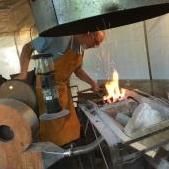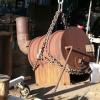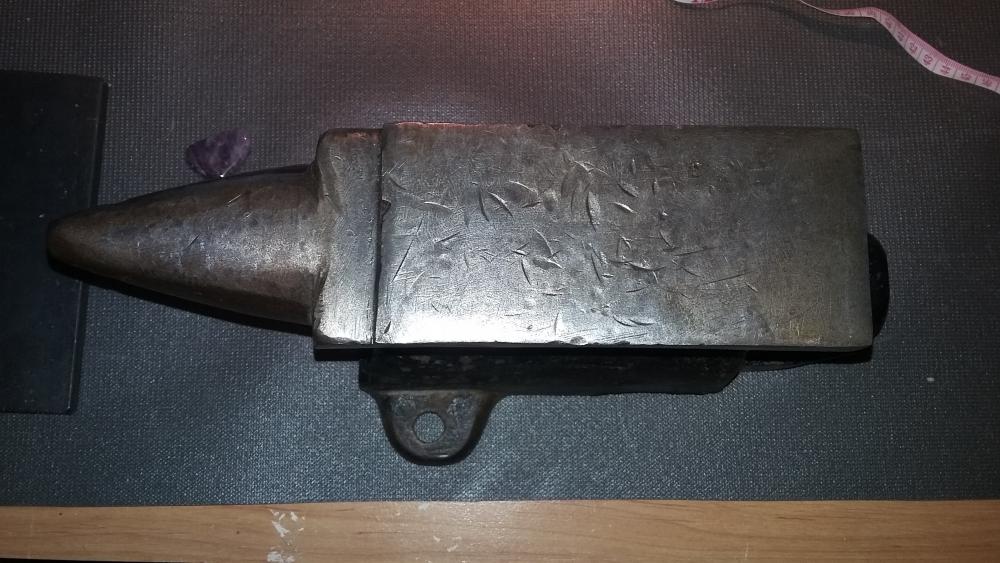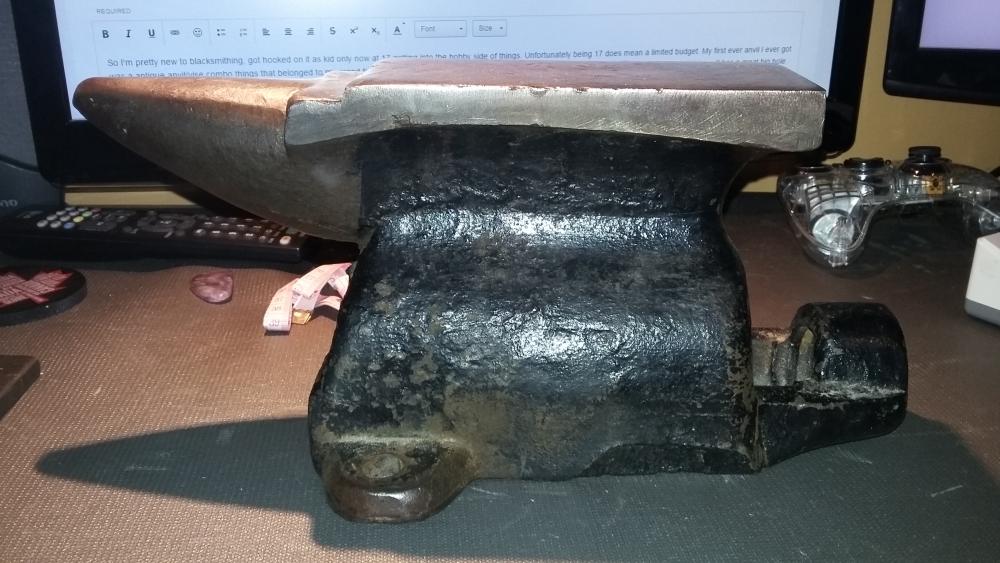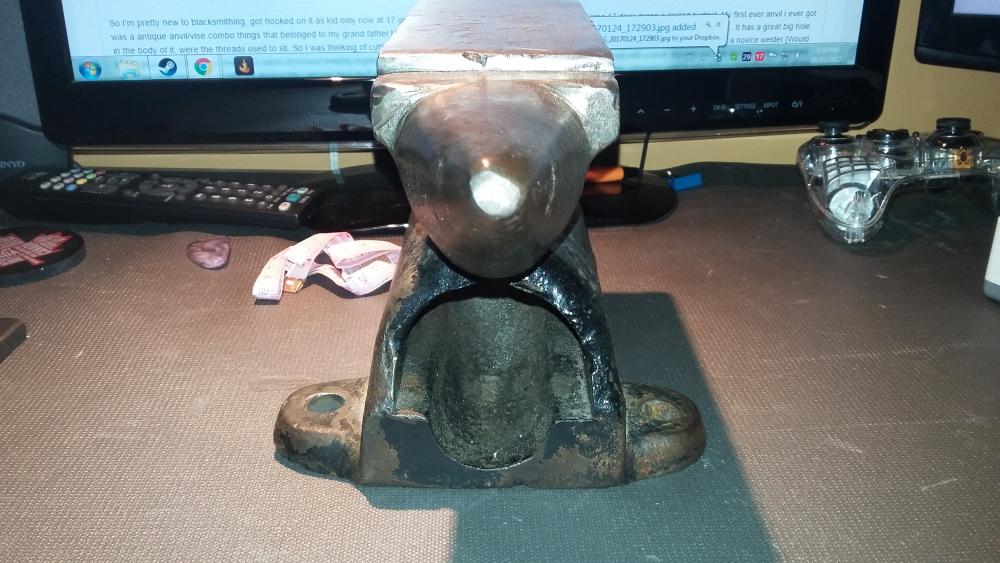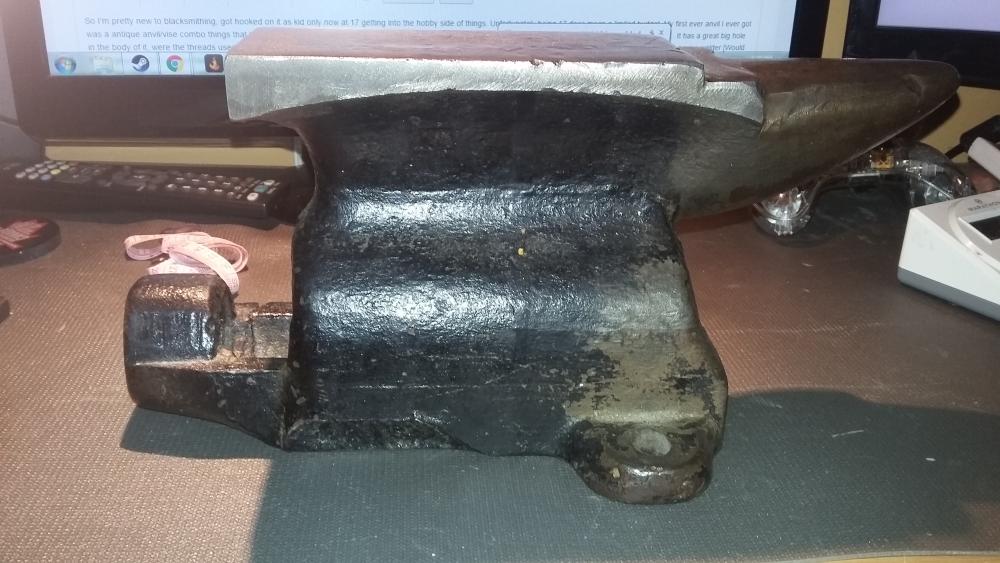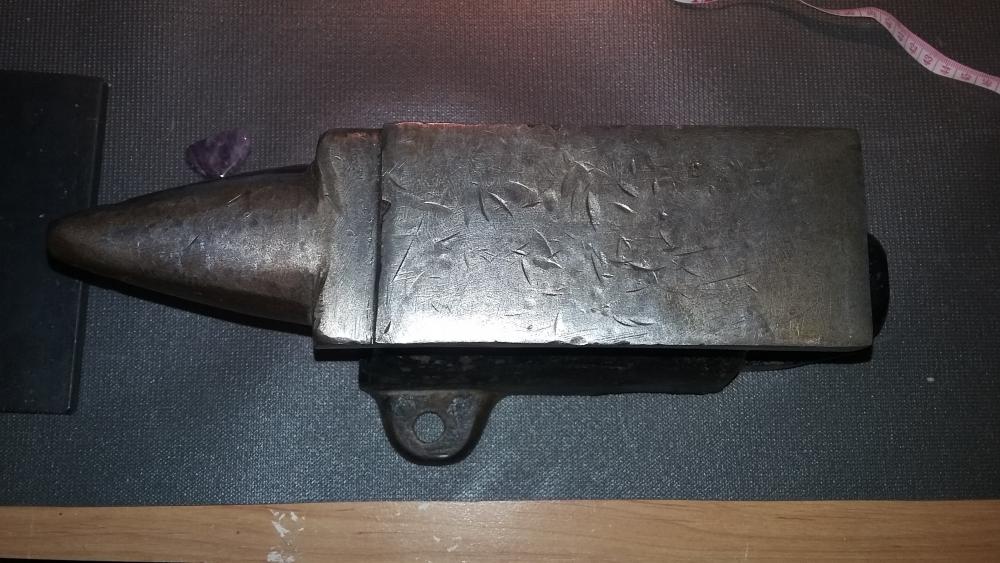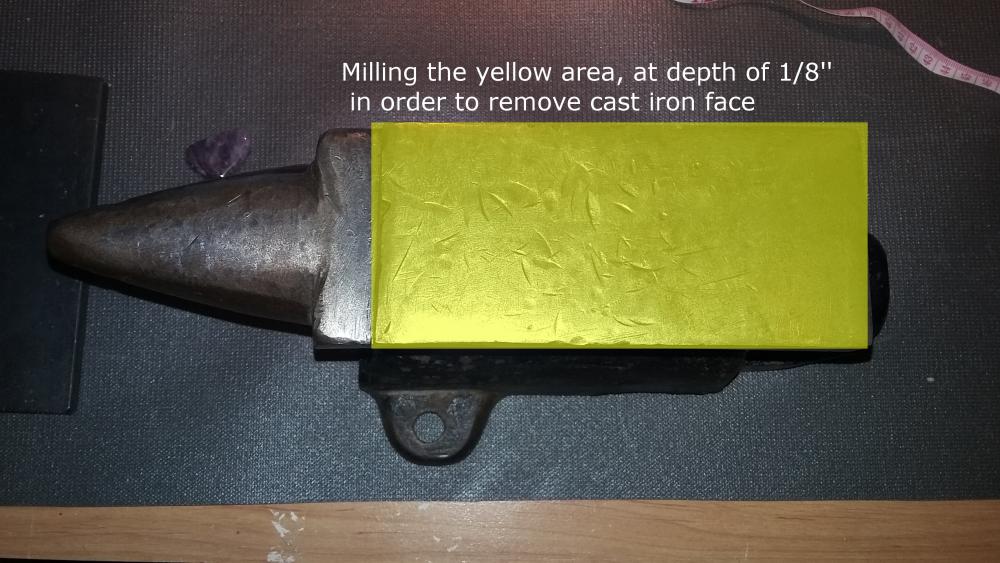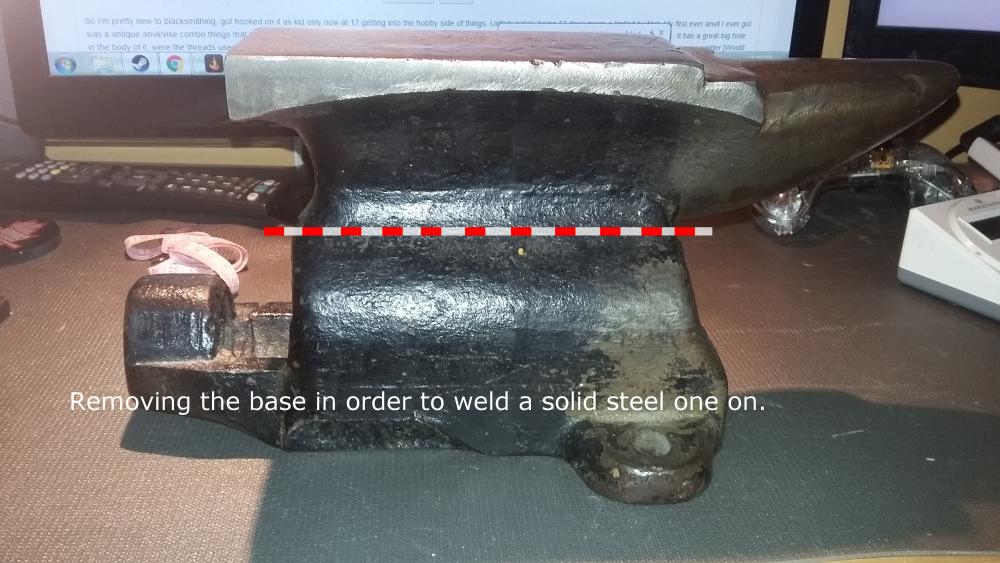
CheschireCat
Members-
Posts
13 -
Joined
-
Last visited
Profile Information
-
Gender
Male
-
Location
Canada, Ontario, Ottawa
-
Interests
Welding, Blacksmithing, 3D modeling and Printing.
Recent Profile Visitors
-
Hardening a CR-V based hotcut hardy tool
CheschireCat replied to CheschireCat's topic in Heat Treating, general discussion
Fair enough. Have a good day. -
Hardening a CR-V based hotcut hardy tool
CheschireCat replied to CheschireCat's topic in Heat Treating, general discussion
Ok that's a fair point. The reason I would describe a question like that is not because of the intrinsic qualities of said question but rather the intent and resulting consequences, such as the wasting of everyone's time when said question is placed. Any case, It's hardly the end of the world, we don't fully agree and we don't need too. I feel we've strayed complete off topic. I say that we should probably leave that discussion there. Anyways I do wish you all well for the help you've given me as well as the time you spent on me. -The CheschireCat A quote from JHCC: ''In my line of work, one question we constantly ask ourselves is, "What do we NOT know that we NEED to know in order to move forward?" If your questions brought you to a place of greater comprehension of the level to which you are uninformed, then you're doing fine.'' On that we agree, -
Hardening a CR-V based hotcut hardy tool
CheschireCat replied to CheschireCat's topic in Heat Treating, general discussion
All right thanks again. All though I do disagree on one point. There are stupid questions. Those are questions that are asked by people who just end up ignoring the answer. I guess what I meant to say was I'm asking poorly informed questions. But hey at least the questions are coming from a place learning right? -
Hardening a CR-V based hotcut hardy tool
CheschireCat replied to CheschireCat's topic in Heat Treating, general discussion
Ok. Understood. I'll be keep everything in mind. I have not read the sections about evaluating mysteries steels. I assume there are some on Iforge? Once I have some free time I'll read trough that stuff. I do apologize to our Admins. It won't be happening again. Ok, ditch the current hot tool and start again from a known steel, read up on mystery/alloyed steel and once more confident come back to the tool or rest of steel. Now that you mention it, it may be possible that my tool may have been much too thin. I'll look at redesigning the next one I forge. Any case thanks again for the help guys. I apologize again for my lack of forum knowledge and by consequence my poor decisions. I know now and it won't happen again. -Stick to known steels for know. -Read up on Iforge for mysterious steels before opening a new thread. -Seek out, alternatives for low budget steels. -Possibly badly designed tooling. Anything else I should be keeping in mind? I am always interested in learning so if I'm missing anything out please let me know. That's why I joined IForge, I don't have any local smiths who are willing to take on an apprentice. So I am turning to Books on subject, lessons, podcasts, videos and really just about any source I can get my hands on. And Honestly IForge has been one of the best. Even if so far I have just been asking (Rather stupid) questions. -
Being a newish smith I need tooling. Easiest to get it is buying it or making. With no budget I therefore make my own. I bought a great big cold chisel from princess auto (Canadian habour freight) (The chisel in question:<link removed>) , forged it, ground it, and attempted to harden it. First in a Synthetic machine oil, it being still soft I restarted from square one (Anneal, temperature cycle ect...) I then tried a room temperature water quench. It was slightly harder but still too soft to keep a chisel edge. According to this Bladesmithforum thread (<link removed>)(ps. Mods I don't know If I'm allowed to link to outside forums. please do let me know if I'm not allowed. <Mod note: Generally considered bad form>) most cold chisel steel is similar to 5160. I therefore attempted to start yet again this time following 5160 heat treating. Similar to what was described here (<link removed>)(By Doug Lester) in yet another bladesmith forum post. Despite this my chisel was still soft as butter. So I now turn to you folk. How would you recommend heat treating a hot cut chisel made from a cold chisel whose only markings are CR-V. TL:DR: No Idea how to heat treat a chisel made of mystery steel. Only clues are a marking on the stock of CR-V and that the original steel was a cold chisel. A few things I noticed: -The steel was soft under the hammer deforming easily. -It heated up quickly and lost heat quickly (At a rate I would have considered a bit quick for the size of piece I was working.) -The water quenched edge held for a few cuts before deforming to a useless rounded over smashed....... (Grumble grumble....) (Could have been caused by a novice smith hitting too hard on a chisel and not lifting his work piece off the chisel.) Let me know if you guys need or want any other information. If you read the heat treat pinned posts you would know how, it is all in there
-
Heat treating an cast anvil face
CheschireCat replied to CheschireCat's topic in Heat Treating, general discussion
No, offense taken, however I would like to point out the fact the marks are from when I had first first started forging. Now a days, that particular anvil has both been clean-up and retired. My current anvil, 65lbs (Cheapo store bought ASO) has next to no marking on it. Like you said, those notts are hard to get out. As a hobbiest/novice I already have enough of them I don't need anymore. (That and I also got around to making a custom anvil stand. Perfect height for me, not to mention a few inches ajustabillity up or down.)- 14 replies
-
Heat treating an cast anvil face
CheschireCat replied to CheschireCat's topic in Heat Treating, general discussion
Ok, I thanks again for the advice. I am fairly new to metallurgy and blacksmithing in general, so I am asking alot of questions. But In my opinion it is better to ask lots, learn more and mess up as little as possible. Not knowing much about cast iron I sought out help. Simple as that. One of the reason I'm so interested in this anvil is the fact that I have another one lined up, a nicer one, (wrought iron body steel face.) I just need to finish pricing things out with the owner. Meaning I have this ASO left over. I figured at the very least I could experiment and learn form it.- 14 replies
-
I was recently on the Anvil section of the forums asking about replace a cast iron face with an steel one. I haven't quite yet decided on whether I will or not. However I am leaning towards not replace the cast iron face. Now my issue with the cast iron face is just how soft it is. I realize that sounds a little bit strange however it dents rather easily, (I was under the impression that Cast Iron was very brittle not soft.) So I was wondering if possibly when I refinished the anvil face with a Angle grinder I might have undone whatever temper there was on it. (Not knowing too to much about proper anvil care at the time) What's your take on it. Attached is a picture of the face. I'll see about getting more picture/video of it. Thanks -Ray
- 14 replies
-
Upgrading a Cast Anvil, Advice needed
CheschireCat replied to CheschireCat's topic in Anvils, Swage Blocks, and Mandrels
Thanks again for the Advice guys, A few points, 1. George, what does ASO mean? It's a term I've never heard of. 2. I have a hardy tool holder, It's an old fram tractor balast that I've punch a 1inch square into, heavy block maybe 20 or so pounds, sits right on top of my anvil, so it's nice and stable and gives a good hammering surface. I'd recomend it for anyone else who has a smaller anvil with no pritchel/Hardy hole. 3. The horn on that thing was flatter than the face of the thing when I first got it. You'd be surprise what you can acheive with a flapdisk on a grinder. I've created another post about the current face in the appropriate topic section. If someone wants to help me out a little bit more here's a link:- 21 replies
-
- cast iron
- help needed
-
(and 5 more)
Tagged with:
-
Upgrading a Cast Anvil, Advice needed
CheschireCat replied to CheschireCat's topic in Anvils, Swage Blocks, and Mandrels
Yeah been working on convincing my teach to let me work on some other projects. I have to make a design doc for any project I plan on doing.- 21 replies
-
- cast iron
- help needed
-
(and 5 more)
Tagged with:
-
Upgrading a Cast Anvil, Advice needed
CheschireCat replied to CheschireCat's topic in Anvils, Swage Blocks, and Mandrels
not feeling discouraged, more toughtful trying to stuff working kinda tought.- 21 replies
-
- cast iron
- help needed
-
(and 5 more)
Tagged with:
-
Upgrading a Cast Anvil, Advice needed
CheschireCat replied to CheschireCat's topic in Anvils, Swage Blocks, and Mandrels
Yeah I spent some time in the chat talking with the guys on there, they recommended pretty much the same thing. Thanks for the advice.- 21 replies
-
- cast iron
- help needed
-
(and 5 more)
Tagged with:
-
So I'm pretty new to blacksmithing, got hooked on it as kid only now at 17 getting into the hobby side of things. Unfortunately being 17 does mean a limited budget. My first ever anvil I ever got was a antique anvil/vise combo things that belonged to my grand father.My grandfather broke the vise right out of it, however because it was a Vise combo anvil thing... It has a great big hole in the body of it, were the threads used to sit. So I was thinking of cutting off the vise style base and welding on a new base. (I realize most smiths cringe at the idea of a novice welder [Would like to point out I now have roughly 2 years structural welding experience so I am decently confidant in my welding skills.]messing around with a anvil. But just you wait I'm just getting warmed up.) The other issue I have with the Anvil is the cast iron face on it. It's well a cast iron face, IE. it dents a even a light 1 lbs. hammer blow. I however want to now if it's a good idea to mill off the face in order to weld a steel tools face on to it. I'm going to be working on it in my Auto-Shop class so I will have access to; a mill, mig welding, arc welding, oxyacetylene torches, angle grinders and any other necessary tools. So to recap really quick: 1. Terrible legs and body support on the anvil, is it worth putting a new one on? 2. Removing the cast iron face and replacing it with a steel one? The anvil face is 6'' by 2&3/4'' by 1/8'' The steel face I plan on using is 6'' by 2&7/8'' by 3/8'' (L*W*H) The step is 3/4'' by 2&3/4''(L*W) The Horn is 3&1/2'' long the tip is roughly 3'' in diameter the widest part (Next to the step) is 7'' in diameter (L*D) The full height is 5&1/2'' The Tip of the horn to the far end of the base is 1' Attached are pictures of the anvil. Thanks for having read trough that short story of mine, -Ray Ps, even if I don't end up cutting and welding stuff I still plan on cleaning it up. (Sand blasting paint and rust off. Along with re-finishing the horn, as it really flat on top.[As is customary with cast anvils I know.])
- 21 replies
-
- cast iron
- help needed
-
(and 5 more)
Tagged with:
